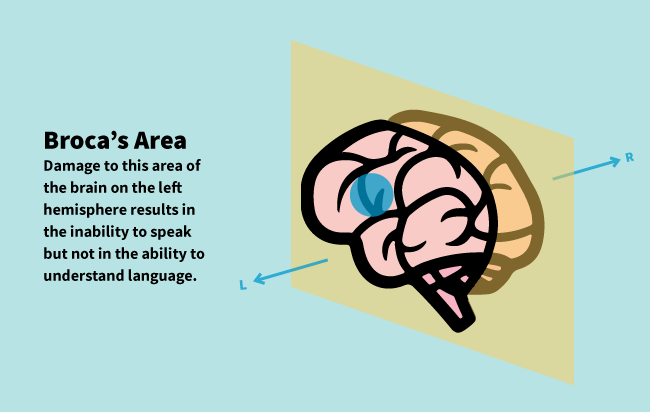I recently threw a softball math problem at one of my friends and her response was: “I don’t know, I was never any good at math. I’m more of a right-brain thinker than a left.” The idea that some of us have a dominant left brain – and thus excel at logic, math, and factual information – while others are right brained – better at creative and intuitive tasks – is a widely held public belief, but is completely inaccurate.
The truth is that my friend – and 91% of UK school teachers – are wrong. She does not in fact use the right side of her brain more than her left, nor does her preference for art over math have anything to do with her brain hemispheres at all. Now, it’s true: the brain is lateralized. Some functions are predominantly carried out on one side. For example, rudimentary math skills, like counting or memorizing a times table, show more brain activation on the left side than the right. But these are basic cognitive abilities, and extending them to make broader statements about one’s personality is completely unsupported by scientific evidence. Brain imaging studies show that tasks which we consider to be particularly creative, like painting an abstract picture, or logical, like solving a math equation, equally require the entire brain. But it turns out this isn’t such a hard myth to debunk: neuroscientists have known for decades that neither hemisphere “dominates” over the other. This age-old misconception has been so hard to shake because it’s more about society than science and, at first, that society was very sexist.
All animal brains are visibly split into left and right sides; but the idea that these hemispheres operate different parts of the mind originated in the late nineteenth century. French physician Paul Broca discovered that damage to the front-left part of the brain impaired a patient’s ability to speak, but the same damage on the right side did not. Since little else appeared to be wrong with the patient, Broca rightly hypothesized that our ability to use language must critically depend on this specific area – which we now call “Broca’s area”.

This significant discovery quickly captured the public mind, because it was thought to validate pre-existing prejudices at the time: that white men were more intellectually evolved than women, people of colour, children, and the poor. So when a higher intellectual ability, like language, was found to be localized to the left hemisphere, people interpreted these findings as an explanation for why white men were intellectually superior: because they had a dominant left brain, of course! And it wasn’t just quacks and elitists who believed this, but also some prominent scientists published in well-respected journals.
It didn’t take long for people to begin to depict the right hemisphere as the antithesis to the left, despite having almost no scientific evidence of the fact. Parts of the mind thought to be inferior and animalistic, like emotions, instinct, and sexuality, were assigned to the right hemisphere as a natural juxtaposition to the left. Perhaps unsurprisingly, these were traits typically embodied by women. Thus by the end of the century the left hemisphere was widely accepted to be a symbol of white male excellence: the ideal citizen endowed in logic and reason. Conversely, the right hemisphere became the inferior “female brain”: emotional, instinctual, and unstable.
Even though Broca and other scientists insisted that his findings did not show that the left hemisphere was more intellectual than the right, nor that anyone was dominant in one or other, the idea remained quite popular. The classic Victorian science fiction novel, “The Strange Case of Dr. Jekyll and Mr. Hyde”, stands as an analogy for this left-right breakdown. Dr. Jekyll, a well-groomed doctor and symbol of good white civility, is in exact opposition to his alter ego, Mr. Hyde: an unkempt degenerate driven by emotion and desire.
The male-female “Dr. Jekyll-Mr. Hyde” paradigm persisted until the mid 1950’s, when Dr. Wilder Penfield at the Montreal Neurological Institute found actual scientific evidence that the right hemisphere had its own intellectual superiorities. This led researchers to paint a more equal picture of the brain where the left hemisphere might be superior at calculations, but the right is better at spatial awareness and pattern recognition. But once again these small cognitive abilities were extended to make broader categorizations of human nature: from male-female to science-art. This idea really took off with pseudopsychologists, educators, and writers who pinned the left logical brain, associated with more rigid and inflexible styles of learning, against the creative and artistic power of the right. Neither the current nor the historical understanding of the mind is scientifically correct, and yet the age-old tendency to categorize one another persists.
Overall, this myth is pretty harmless; it serves as a good way to make sense of our differences. However, it is dangerous to believe that our hemispheres determine who we can become. No part of a healthy brain, not the left nor the right, restricts anyone from excelling at logical or creative projects. How we divide the brain says more about what we think of each other, rather than how it actually works.







